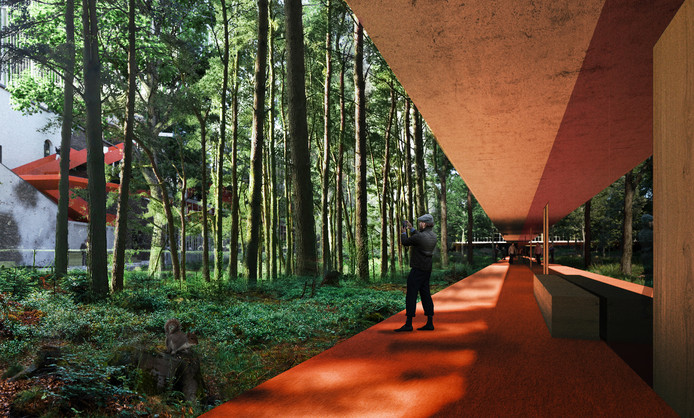
There is still plenty of scope in the construction industry for reducing CO2 emissions. For example, by building a lot more with timber. With a ‘tool’ developed by scientists from the Ruhr University Bochum (RUB, Germany), municipalities will soon be able to work out for themselves how much CO2 emissions can be reduced whenever they build with wood instead of concrete.
There are already several plans for modern wooden buildings in the Netherlands as well. In Eindhoven, for example, the building ‘Dutch Mountains’ is to rise up. This will be made out of wood for the most part. Architect Marco Vermeulen talks about the advantages of timber construction on the TV program Tegenlicht from the Dutch VPRO broadcasting company.
After all, wood is not only a renewable raw material. Trees also serve as carbon reservoirs because they absorb and store CO2 that’s in the atmosphere. However, the number of wooden houses in the Netherlands is very limited. The construction sector’s climate balance could be much better if wood is used as a building material far more.
Also interesting: Intelligent wood could become the urban construction material of the future
Prof. Dr. Annette Hafner, professor of Resource Efficient Building at the RUB, and her team had already calculated in 2017 how much CO2 can be saved if 55 % of single-family houses and 15 % of all apartment buildings were built out of wood between now and 2030. That accounts for no less than 23.9 million metric tons of CO2.
An instrument for local authorities
Annette Hafner is working to promote the use of wood as a building material on the basis of these figures. In her opinion, however, it is not enough to decide purely on a national level that the sector should focus more on timber construction. “The municipalities should also be able to implement this plan,” says Hafner. To help them do this, her team is working with data analyst specialists Disy Informationssysteme to develop a tool that enables separate communities to estimate how much greenhouse gases they would save if they were to increase the proportion of timber housing in their area.
The project ‘Timber Construction GIS: Greenhouse Gas Savings through Construction and Renovation with Wood‘ runs until the end of January 2022 and is funded by the German Federal Ministry of the Environment and the German Federal Ministry of Agriculture. A GIS (geo-information system) forms the basis for the tool. It provides a detailed digital map of all buildings in a municipality. These can then be screened street by street for their potential for climate optimization. Not just the type of building is taken into account. For instance, if it is a single-family house or not. But it also takes into account the age of the houses and, as such, the need for renovation. Menden in the German Sauerland region is serving as a model municipality for the development of this instrument.
Calculating potential CO2 reductions
“You can set whether or not the renovation or new buildings in certain urban areas should be wood-based and you then end up with a calculation of how much CO2 you would save,” Annette Hafner explains. But the GIS for timber construction also provides information about which wood sources would be available to the local surroundings. In the future, this should enable local authorities to independently assess whether timber construction is feasible for them and how much greenhouse gas emissions will be able to be reduced.








